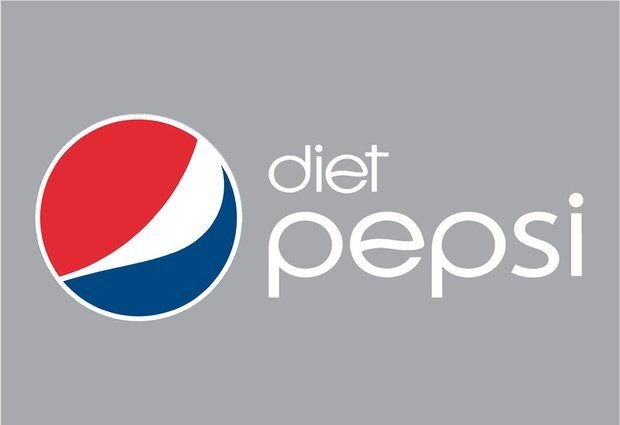 |
The logo of Diet Pepsi. (PepsiCo.) |
Diet Pepsi is quietly changing its sweetener ahead of a major rebranding of the soft drink set for next month.
The change comes as PepsiCo Inc. looks to reinvigorate its namesake brands after losing market share to Coca-Cola Co. in recent years.
Cans of Diet Pepsi around the country now list a mix of two artificial sweeteners, a pairing that is commonly found in newer diet sodas. Previously, Diet Pepsi used only aspartame, which is sensitive to heat and breaks down more easily.
This summer, PepsiCo had declined to say whether it would go ahead with such a change after reports surfaced that it was testing the new sweeteners. Although the switch is only intended to help prevent the taste from degrading over time, companies are often sensitive to public perceptions that they might be tinkering with major brands. PepsiCo executives likely don’t want to call any attention to the use of artificial sweeteners in the drink either.
When reached for comment Sunday, PepsiCo spokeswoman Andrea Canabal said that Diet Pepsi using the new sweetener mix started hitting shelves in early December. She said the new mix will be more widely available in the coming weeks.
“It’s not like a light switch. It’ll start appearing as shelf space clears,’’ she said. In January, Canabal said the company is planning a major ad campaign that will include a new logo with a heart and the theme “Love Every Sip.’’
The sweetener change will not be explicitly communicated in the ads, which will feature actress Sofia Vergara.
In addition to aspartame, cans of Diet Pepsi found in New York, Omaha, Nebraska, and the San Francisco Bay Area now list acesulfame potassium as an ingredient. The ingredient is often used in combination with other artificial sweeteners and can be found in a wide range of foods including baked goods, chewing gum and gelatin desserts.
John Sicher, editor and publisher of the industry tracker Beverage Digest, said the synergistic effect of mixing the two sweeteners is intended to help keep the drink’s sweetening power at a constant level, making it taste fresh longer.
“A change in sweetener does not change the flavor,’’ he noted.
PepsiCo said in a statement Sunday that it was adding a “very small amount’’ of acesulfame potassium “to ensure consistency with every sip.’’ The sweeteners used in Diet Pepsi vary depending on the region of the world.
The move to improve Diet Pepsi comes amid a broader push by PepsiCo to boost sales of its flagship soda. Under pressure from investors, CEO Indra Nooyi earlier this year announced the company would step up investment in its flagship brands.
Already this year, PepsiCo has made several splashy moves including a wide-ranging partnership with singer Beyonce and a multiyear deal with the National Football League to sponsor the Super Bowl halftime show. TV ads for Pepsi have also featured singer Nicki Minaj, New Orleans Saints quarterback Drew Brees, the boy band One Direction and international soccer stars including Lionel Messi.
Whether the efforts will pay off with increased sales remains to be seen. In the latest quarter, PepsiCo said its soda volume in North America fell 2 percent, reflecting the broader decline in soft drink consumption that has plagued the industry since 1998. But the company noted that its share of the market had improved.
For now, Diet Pepsi remains the No. 7 carbonated soft drink with 4.9 percent of the market, according to Beverage Digest. That’s down from 5.3 percent in 2000. Meanwhile, Diet Coke’s share has increased in that time from 8.7 percent to 9.6 percent. Diet Coke, which still only uses aspartame, overtook regular Pepsi to become the No. 2 soda brand in 2010.
Coke remains No. 1 and Pepsi is No. 3.
Still, Diet Pepsi rakes in roughly $5 billion in a year in revenue and remains one of PepsiCo’s biggest moneymakers. The company, based in Purchase, N.Y., also makes Frito-Lay snacks, Tropicana juices and Quaker oatmeal.
It’s not the first time a soda company is tweaking the sweeteners in its drinks; PepsiCo made a similar move with Diet Mountain Dew in 2006, while Coca-Cola did the same with Diet Sprite in 2000. (UPI)
<관련 한글 기사>
'만년2위' 펩시, '특단의 조치' 무엇?
미국 음료회사 펩시의 ‘다이어트 펩시’ 제품이 다음달 청량음료 제품군 리브랜딩을 앞두고 감미료를 바꿨다.
펩시는 자사의 이름을 내건 청량음료 브랜드인 ‘펩시콜라’가 경쟁사 코카콜라의 제품에 최근 몇 년간 계속해서 시장 점유율을 빼앗기는 가운데 재기의 기회를 노리기 위해 제품 성분을 바꾸기로 결정했다.
현재 미국 내에서 유통되고 있는 다이어트 펩시 제품의 캔 표면에는 다이어트 청량음료에 주로 사용되는 두 가지 인공감미료의 이름을 모두 기재하고 있다. 종전까지 다이어트 펩시는 단맛을 만드는 인공감미료 아스파르테임(aspartame)만을 사용했는데, 이는 열에 약해 변질되기 쉬운 단점이 있었다.
올 여름까지만 해도 펩시는 새로운 감미료를 실험 중이라는 언론 보도를 부인해왔다. 일반적으로 음료 업체들은 자사의 주요 브랜드와 관련한 대중의 인식에 민감하기 때문에 다이어트 펩시 브랜드가 인공감미료와 관련해 언론의 주목을 받는 것을 펩시가 꺼렸을 가능성이 높은 것으로 알려졌다.
미국 뉴욕, 오마하, 네브라스카, 샌프란시스코 등지에서 판매중인 다이어트 펩시 제품에는 아스파르테임과 더불어 아세설팜칼륨(acesulfame potassium)이 함유되어 있다고 표기되어 있는데 이는 제빵류, 껌, 젤리류 등의 식품에 많이 사용되는 합성감미료이다.
전문가들은 새로운 감미료의 추가로 음료의 단맛과 청량감을 오래 유지시킬 수 있다고 설명했다.
올해만 해도 펩시는 팝스타 비욘세, 축구선수 리오넬 메시와 계약을 체결하고 미국 수퍼볼 경기 하프타임 광고를 내보내는 등 홍보활동을 강화하고 있다.
한편 이러한 노력들이 성과를 거둘지는 미지수다. 지난 분기 펩시의 북미 판매량은 2퍼센트 하락해 지난 1998년부터 계속된 청량음료 시장 축소에 타격을 받았다. 그러나 펩시 측에 따르면 전체 시장에서의 점유율은 상승한 것으로 알려졌다.
현재 다이어트 펩시는 전체 탄산음료 시장의 4.9퍼센트 점유율을 차지하며 7위를 기록하고 있다. 이는 지난 2000년에 비하면 5.3퍼센트 감소한 수치이다. 그러나 경쟁사 코카콜라의 브랜드 ‘다이어트 코크’의 점유율은 8.7퍼센트에서 9.6퍼센트로 상승해 펩시 사의 주력 제품인 ‘펩시’콜라를 앞지르고 탄산음료 시장 전체 2위를 기록하는 기염을 토했다.
그러나 다이어트 펩시는 여전히 연간 50억 달러에 달하는 수익을 올리고 있어 펩시의 효자상품으로 자리매김 했다.
한편, 청량음료 회사는 종종 감미료를 바꾸는데 펩시는 지난 2006년 자사의 브랜드 다이어트 마운틴듀 제품의 감미료를 바꾸었고, 코카콜라는 다이어트 스프라이트 제품의 감미료를 지난 2000년 바꾼 바 있다. (코리아헤럴드)








